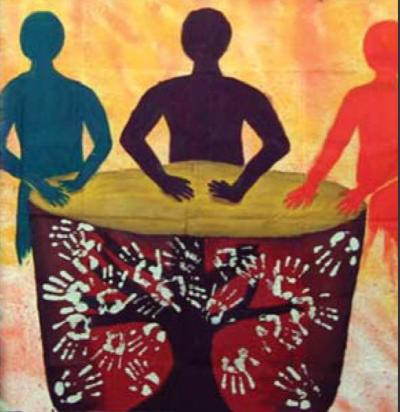|
|
Reflective Peacebuilding: A Planning, Monitoring, and Learning Tool Kit
un articulo por Kroc Institute for International Peacebuilding
This toolkit is the product of a collaborative effort between the Kroc Institute and Catholic Relief Services' Southeast East Asia Regional Office.

click on photo to enlarge
The goal of this Toolkit is to improve peacebuilders’ ability to be reflective practitioners; this involves enhancing peacebuilders’ capacity to design and impact transformative change, and track and improve upon those changes over time, in unpredictable conflict contexts.
The tools themselves can stand alone or augment established design, monitoring, evaluation and learning systems and practices. They are intended to help focus on dimensions specific to peacebuilding work and provide practitioners with resources for enhancing their creativity in developing context-specific learning, monitoring and evaluation systems.
The overarching theme of the Toolkit is learning before, during and after implementation of peacebuilding programs. Click here to find the toolkit on line.
Content overview:
* Chapters one to three explore the connections between learning and effective peacebuilding practice, and suggest practices for reflection and learning as individuals and communities.
* Chapter four focuses on ethical considerations for monitoring, evaluation and learning.
* Chapters five through eight examine the types of change that peacebuilding practice promotes, and provide tools to further understand change, as well as to develop indicators to trace those changes over time.
* Chapters nine and ten address planning for long-term change and scaling up activities.
* Chapters eleven and twelve highlight monitoring and evaluation practices.
* The book concludes with a chapter on documentation practices that can enhance learning.
John Paul Lederach is widely known for his pioneering work on conflict transformation, Lederach is involved in conciliation work in Colombia, the Philippines, and Nepal, plus countries in East and West Africa. He has helped design and conduct training programs in 25 countries across five continents.
Hal Culbertson is Executive Director of the Kroc Institute for International Peace Studies at the University of Notre Dame.
|








|
DISCUSSION
Pregunta(s) relacionada(s) al artículo :
What are the most important books about the culture of peace?,
* * * * *
Comentario más reciente:
:
Johan Galtung is indeed the most perceptive peace researcher of our time.
Not only did he predict the fall of the Soviet Union quite precisely, but he has also predicted the fall of the American empire. Here are excerpts from his 2004 article,
On the Coming Decline and Fall of the US Empire
The prediction of the decline and fall of the US Empire is based on the synergy of 14 contradictions, and the time span for the contradictions to work their way through decline to fall was estimated at 25 years in the year 2000. There are more contradictions because the US Empire is more complex, and the time span is longer also because it is more sophisticated. After the first months of President George W. Bush (selected) the time span was reduced to 20 years because of the way in which he sharpened so many of the contradictions posited the year before, and because his extreme singlemindedness made him blind to the negative, complex synergies. . . .
Here is the list of 14 contradictions posited in 2000:
I. Economic Contradictions(US led system WB/IMF/WTO NYSE Pentagon)
1. between growth and distribution: overproduction relative to demand, 1.4 billion below $ 1/day, 100.000 die/day, 1/4 of hunger
2. between productive and finance economy (currency, stocks,bonds) overvalued, hence crashes, unemployment, contract work
3. between production/distribution/consumption and nature: ecocrisis, depletion/pollution, global warming
II. Military Contradictions (US led system NATO/TIAP/USA-Japan)
4. between US state terrorism and terrorism: Blowback
5. between US and allies (except UK, D, Japan), saying enough
6. between US hegemony in Eurasia and the Russia India China triangle, with 40% of humanity
7. between US led NATO and EU army: The Tindemans follow-up
III. Political Contradictions (US exceptionalism under God)
8. between USA and the UN: The UN hitting back
9. between USA and the EU: vying for Orthodox/Muslim support
IV. Cultural Contradictions (US triumphant plebeian culture)
10. between US Judeo-Christianity and Islam (25% of humanity; UNSC nucleus has four Christian and none of the 56 Muslim countries).
11. between US and the oldest civilizations (Chinese, Indian, Mesopotamian, Aztec/Inca/Maya)
12. between US and European elite culture: France, Germany, etc.
V. Social Contradictions (US led world elites vs the rest: World Economic Forum, Davos vs World Social Forum, Porto Alegre)
13. between state corporate elites and working classes of unemployed and contract workers. The middle classes?
14. between older generation and youth: Seattle, Washington, Praha, Genova and ever younger youth. The middle generation?
15. To this could be added: between myth and reality.

|
|









